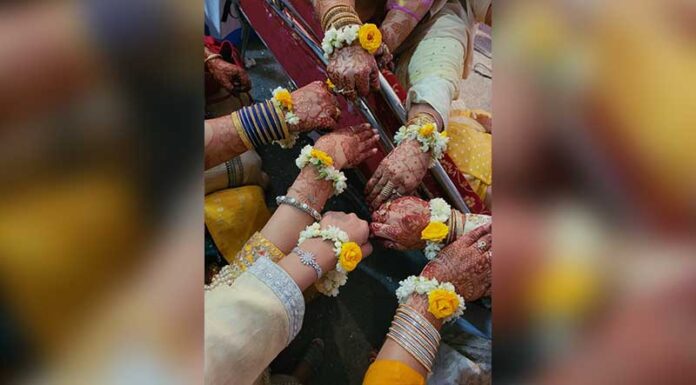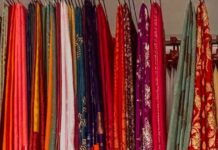By Sabah Zaheer
The phrase Big Fat Indian Wedding is a popular buzzword that encapsulates weddings in India that are so lavish and opulent that they feel like one has stepped into a Bollywood movie. It’s the kind of wedding that is carried out over the span of a month, countless guests are invited and is hosted at the most illustrious of venues. This description may sound familiar to readers with the recent ultimate Ambani wedding and its invitation of A-list celebrities and insane performances. According to some estimates, the wedding industry in India is worth $50 billion a year, with an annual growth rate of 25% to 30%. Industry insiders believe that India may hit $75 billion during the 2023-2024 wedding season. Could this increase of money spent on weddings be a result of the lavish weddings seen recently? Or is it the Indian way?
While normal weddings would never reach this magnitude of opulence, most Indian weddings do go on for several days, host thousands of guests and are very regal in terms of décor, fashion and food.

The preparations of Indian weddings begin months in advance, so much so that families book wedding venues before their children have found spouses. In 2019, I remember speaking to my aunt about her looking for a wife for her son.
When I asked her when my cousin’s wedding might be, she confidently replied with the answer, “On July 16.”
I asked with confusion, “Have you guys found someone for him marry?”; my aunt replied, no.
I then asked, “Well then how do you know when the wedding will happen?”
My aunt said, “because I’ve booked the venue already so the wedding’s going to happen on July 16 for sure.”
This instance is the least of what goes on in preparation for Indian weddings. The pre-wedding part of Indian weddings consists of Haldi, Mehendi or Dholki. Haldi is a pre-wedding event in which friends and family gather to apply turmeric paste on the faces and body of the groom and bride.
Haldi: It is the Urdu/Hindi word for turmeric and is a favored antiseptic for radiant and blemish free skin, hence it is used as part of a prewedding paste for glowing skin.
Mehendi: It is a traditional paste made from the powder of the leaves of the henna tree that is used to stain/ dye hair or hands. The paste can also be piped into plastic bag cones to create intricate henna designs on hands and feet.
The event is very colorful and some people play dhol, Bollywood music and dance. The color scheme is very bright and vivid with colors like blues, yellows, oranges and pinks. Brides typically wear Rajasthani styled outfits, colorful and mirrored lehengas. The Mehendi is the event assigned for when the bride and her guests get henna applied to their hands in intricate patterns by professional henna artists. Most Indian brides get mehndi applied on the entirety of their arm in patterns like mandalas, aminis (mango shapes), swirls, flowers and sometimes even peacocks. The entire process takes hours to complete.
Dhol: It is a double-sided Indian drum that is played in traditional events like weddings, political events and informal events. It is famously used in Qawwali music and is played using two sticks.
The Nikah is the most important day for Muslim Indians and consists of the officiation of marriage. The process is a beautiful ceremony where the bride signs the Nikah contract in agreement of the marriage and the groom does the same. The officiator then asks the couple for verbal confirmation and the couple says the words “Qubool hai,” which means I accept. Since the Nikah day is one of tradition and customs, brides wear bejeweled traditional outfits like Saris or Lehengas with intricate beading in shades like red, cream, golden or warm tones in general. When I asked my cousin who got married recently of her number one tip for brides to be, she said that while following traditional color schemes for wedding events is a beautiful concept, one must wear a bridal outfit that follows a color scheme that matches their skin tone. She said that her mother-in-law insisted she wore a traditional red lehenga but she knew bright red clashes with her skin tone so she opted for subtle pink.
My cousin also insisted that brides “wear outfits that aren’t too heavy because many Indian bridal outfits can have extensive heaving mirror work, beading and layers of tule.”
An interesting part of South Indian weddings is how many fun rituals occur throughout the event. One family favorite is the Joota chupai ceremony. It is a funny prank played on the groom where the bride’s side of the family steal the groom’s shoe when he is distracted. With his shoe stolen, the groom must now dole out how much he will pay the bride’s side of the family in compensation for getting his shoe back. It is a hilarious tradition that allows for some family fun.
Walima: It is an Islamic wedding reception held after the marriage ceremony where community members come together to celebrate the newly married couple. The Walima is typically hosted by the groom’s family and the focus is on hospitality.
The Walima is the final event in the saga of Indian wedding events and is the day when most guests are invited to celebrate around delicious food. An abundant variety of food from different parts of India is served and displayed out for the buffet. Hyderabadi biryani, Lucknowi kebabs, Punjabi lassi and South Indian Dosa Vadas are family favorites at Indian weddings. In terms of fashion, the grooms usually wear western style clothing, such as posh suits or tuxedos, while the brides opt for gowns and long fanciful dresses with cool tones like blues and purples.
Lucknowi kebabs: They are kebabs that originate from the city of Lucknow and are a delicacy popular for their tender texture and rich flavors. The kebabs are made through slow cooking marinated meat over a low flame or in a sealed container.
Indian weddings are an elaborate affair that consists of family, incredible food, vibrant fashion. They are steeped in old and rich traditions.
One may question the excesses of some Indian weddings and how the special day becomes lost in the noise of the showy and fanciful affair. Looking at all the ritz and fanfare that goes with Indian weddings, one really gets a feel for how important these events are to Indians. But why? Why splurge all this money, time and food on a wedding? It all goes back to the importance India places on family. And an event such as a wedding signals the beginning of a family, and the couple, in doing so, also end up merging their own families into a bigger one. India loves its familial connections, and this is a true culmination of it all: a big, fat Indian wedding.


















